Orion Magazine, November/December 2006
MY FATHER PROBABLY WASN’T THE ONLY PARENT in our southern New England town to entertain his children by chasing them around the house pretending to be a scary monster. But he probably was the only one who pretended to be an insect. Crouched down, hands curled in front of his nose, he’d slowly unfurl two fingers. When they started to flutter, that was the signal for my sister and me to start running. Dad had turned into the Giant Mosquito, prime predator of his native India, and he was out to get us. My sister and I would pound through the house, howling in terrified delight.
We loathed mosquitoes. Every summer spent with relatives in Coimbatore, the south Indian town where our grandparents lived, meant mandatory donations of liters of blood to the local mosquitoes, and glum hours of scab-picking, tearing our fingernails into the angry red wounds they left behind.
It wasn’t that mosquitoes terrified, per se, but rather the malignant microbes lurking within them, jostling for release.
I had seen the result once when I stumbled across a soft, fat cylinder in a dark alley near my grandmother’s flat. The streets were often littered with prone bodies that we’d gingerly step around on the way to early morning temple visits. The sleeping boy I had tripped over had been infected by a mosquito with filarial worms, which had distended his leg into a gray, pimpled log.
Even more sinister parasites lurked within the dapple-winged anopheles mosquito: the protozoan parasite plasmodium, which causes the disease the Italians named after bad air, mal’ aria. During the years I visited as a child in the 1970s, plasmodium had infected no fewer than 25 million Indians, rendering those who survived its depredations ready prey for a host of other deadly afflictions.
My sister and I belonged to this country somehow, but the mosquitoes made it clear that we were different. They forced the ritual observance of our otherwise invisible foreignness: the nightly stringing up of the frayed mosquito net, pulled out of the deepest recesses of our grandmother’s cupboard, over our thin mattresses. Sequestered in that gauzy quarantine, dosed with Western antimalarial drugs, I’d ponder the poverty and disease outside, my own confused relation to this place, and the flitting creatures filtering through the tiny tears in the mesh.
At home, malaria was just a faint spirit, haunting family games of tag. In India, malaria was painfully corporeal. I wracked my seven-year-old brain for the connection that could explain the difference.
I’VE SPENT MUCH OF MY adult life hunting for that connection, the reason why vast numbers of people in places like India live with disease and scarcity while those of us in the West wallow in health and abundance.
There are many accidents and happenstances of geography, history, and biology that created our lopsided world, of course, but if I had to pick just one, plasmodium would be it. And the parasite’s truest ally is not the mosquito but the logic and appetites of the Western society that so set me apart. My grandmother’s mosquito net stood for my foreignness in more ways than I could have imagined.
After the rise of industrialism, Western peoples scoured the malarial tropics for resources to feed their smoking machines. The colonial conquests that followed, in many places, made malaria worse for the colonized, by creating new opportunities for parasite-laden insects to feed on humans. In India, for example, British administrators fortified with antimalarial quinine cut over thirty thousand miles of canals through the countryside to make way for the irrigated farmland and railroads that would transform the country into a productive colony for the Crown. By the early 1900s, India was the most heavily irrigated imperial territory in the world. It took over thirty years for British engineers to recognize the need for drainage ditches, but by then the periodically overflowing canals had swamped “great patches of surrounding land,” writes historian Sheldon Watts. The mosquitoes that bred there made malaria the “principal killing disease of nineteenth- and twentieth-century India.”
The heady logic of conquest that created the mosquito-vulnerable masses also doomed the subsequent campaign to eradicate malaria. When Western powers embarked on an industrial-style war against malaria in the 1950s, they not only failed to exterminate plasmodium but invigorated the parasite, their broadly applied synthetics triggering the emergence of deadly, resistant strains. Malaria kills four times more people today than it did in the 1960s. While HIV infects around 4 million people every year, plasmodium blights 500 million. Three million perish, mostly in the poor regions of Africa, Asia, and Latin America, the burden of disease silently weighing down already strained economies.
But the parasite won’t remain confined in those distant lands for long. Today, resource-extracting companies are penetrating the most remote corners of the planet. They leave behind broken forests and the broken people who live in them, kindling for the parasite’s spark. In nearly every place where malaria once smoldered, it now blazes, from the highlands of Kenya to the banks of the Panama Canal. Defeating its impoverished victims’ slim defenses, plasmodium ably exploits the disrupted environments of our own creation. The activities of the West’s ravenous industrial machine are extending plasmodium’s domain, in ways only faintly grasped beforehand.
FOR THOSE OF US accustomed to inhabiting the same skin and bones all our lives, the changeling wiles of plasmodium seem eerie, unnatural. The protozoan never lives on its own, but instead survives by hijacking not just one but two different creatures, radically altering its shape and physiology some half-dozen times in order to do it. Inside the gut of anopheles mosquitoes, plasmodium spawns its brood, sending sliver-thin, tail-wagging progeny to the insect’s salivary gland. There they wait until the mosquito alights on a warm, still human for a furtive meal of blood with which to nourish its eggs. The mosquito pokes and prods its victim, discharging a battalion of parasites.
Once inside its human host’s bloodstream, the parasites quickly hide within liver cells, where they multiply frenetically. By the time the body’s immune system discovers the infected liver cells, an army of parasites—now they are round blobs—have fled to the bloodstream, where each burrows into a red blood cell. Inside the stricken cells, a feast of hemoglobin ensues. When the hemoglobin is all gone, the parasites explode out of the cells, hungry for more. Their wastes pour out after them.
And only now does the infected person realize she is sick: the wastes are toxic, and she spikes a fever. But by then, each parasite has invaded scores more blood cells, which will be quickly devoured, plaguing the victim with anemic weakness, punctuated by bursts of high fever and chills. Whether the victim sickens and dies or weathers the bout, healthy mosquitoes will be drawn to her like flies to honey by the subtly altered odors of her infected body. They’ll suck up a few parasites, and the cycle will continue.
Plasmodium has elaborated on this scheme—sex in the mosquito, blood feasts in the mosquito’s prey, elaborate wiles to elude the immune system—not just in humans, but in a wide range of vertebrates, from lizards and monkeys to the sparrows sitting on the windowsills of my Boston home. Four species of plasmodium have perfected the art of feeding on humans, from Plasmodium vivax, which rarely kills but can lay dormant for months in an unwitting victim, to Plasmodium falciparum, which never lingers but kills fast. And plasmodia have commandeered as many as sixty species of anopheles mosquitoes with wildly varying habits. Some species infect people outdoors, some exclusively indoors; some will do both. Some breed in fresh, flowing water; others in dirty stagnant water; still others in brackish waters, and in all the permutations in between. Some species can even survive the cold of northern winters, their parasites within them, hibernating.
LAST SPRING, in search of the parasite’s advancing frontier, I sped east out of Panama City, Panama, in a diminutive white rental car. The paved road was perched along the steep banks of a glittering lake, just visible through a tangle of jungle. At its end, a small police checkpoint housed in a wooden lean-to faced a near-empty roadside café. I pulled onto a muddy track and handed over my passport. The police officers, on the lookout for Colombian drug smugglers, inspected it diligently.
Over the past five years, malaria cases have quadrupled in Panama, which has long prided itself on being one of just a handful of tropical developing countries to have nearly conquered the disease. In the 1880s, the scourge felled tens of thousands of French, Caribbean, and other workers attempting to dig a canal through the mosquito-infested jungles of the isthmus. But after U.S. military engineers submerged whole villages to create the canal’s sparkling artificial lakes, the parasite was forced to retreat to the remote fringes of the country, where the indigenous Kuna people lived.
Lately, though, young Kuna have taken to leaving tribal lands for Panama City, drawing Kuna settlements closer and closer to the metropolis. With dormant parasites lurking in their veins, they bring more than their cheap labor to the city’s pizzerias and hotels.
My passport returned, I labored up a steep, slick bank to a small Kuna settlement that had been cut out of the rainforest. It seemed I had arrived in some other, foreign place. An hour and a half ago I’d lunched in a trendy café filled with tourists disgorged by massive cruise ships. Here, wet laundry was strewn on mango trees. Squatting on the packed red clay, women fanned their stone-encircled cooking fires while naked boys gnawing on green mango pits kicked a deflated green ball in the mud. There was no electricity, no running water, no toilets.
Just a year ago, the doorless, windowless shelters of Puente Bayano had been full of Kuna tribesmen from across Panama, who’d paddled their dugout canoes to the village for a week-long tribal congress. They strung their hammocks alongside the locals’. Nightly, Puente Bayano’s plentiful mosquito population gorged on their parasite-infested blood.
The malaria epidemic that swallowed nearly half of the Puente Bayano Kuna after the congress ended didn’t feature the pernicious but seldom fatal Plasmodium vivax that has long persisted across Panama. This was the deadly Plasmodium falciparum, likely first brought into remote Kuna communities along the coast by Colombians. Worse, as shocked doctors from Panama City who descended upon the village quickly found, this was the same beast that was daily annexing new ground around the world, a strain of falciparum resistant to the standard antimalarial drugs commonly used to hold it in check.
In Puente Bayano, drug-resistant Plasmodium falciparum had advanced to just a two-hour bus ride from a major hub of international commerce. A nearly unstoppable killer parasite on the very doorstep of the global economy: a vision to vindicate even the wildest childhood phantasm.
I LEFT PUENTE BAYANO for a rented bungalow along the Panama Canal, where I smashed mosquitoes—guilty before proven innocent—with a special vengeance. A wan smear of human blood and mosquito guts adhered to the surfaces of their final landings. My children proved quick studies, gleefully speckling the walls above their beds with gossamer corpses.
When I was a child, I wouldn’t have been caught dead swatting a mosquito, especially not within eyesight of a relative. Many of the older women in my family still practiced the Jain religion I was born into, which preaches such an extreme form of nonviolence that my grandmother refused to even walk on grass. Every morning, she’d pray cross-legged on the cool stone floor, mumbling mouth obscured by the white mask she wore to prevent germs from inadvertently perishing in her mouth. Some Jains admired by my grandmother even carried around sugar bowls, to spoon sweets onto ant hills.
The lesson was clear enough in the one adornment allowed in my grandmother’s flat: a luridly colored depiction of a Jain monk and a king cobra snake. The snake didn’t bite the monk, obliviously praying, but rather benignly protected him from the elements with its huge, looming head. As if.
But then, Jain principles were forged well before humans felt powerful enough to subjugate their antagonists by force. And in the case of plasmodium, certain defenses had been established without our active participation or knowledge. For hundreds of thousands of years before anyone knew what caused malaria, random innovations born of our genetic mutations blunted the force of plasmodium’s attacks. African people’s blood became slowly immune to Plasmodium vivax. As for Plasmodium falciparum, a genetic mutation emerged that crippled blood cells, turning their normal pliable spheres into stiff crescents impenetrable to the parasite. Those damned with a double dose of the sickle-cell gene perished during infancy, but those blessed with a half-dose found their blood less hospitable to the killer. In Southeast Asia and Papua New Guinea, blood cells became oval and rigid, leaving the people with a touch of anemia but completely immune to plasmodium. These deadly compromises allowed both the people—and the parasite—to survive.
By the time the first Jain monks were settling into their forest hideaways a few thousand years ago, people across Asia and Africa had painstakingly trained their bodies to produce the antibodies and other immune fighters that cull the parasite’s progeny. If children survived the multiple bouts of the disease—many didn’t—their immune systems would be able to restrain the parasites during subsequent bouts. The parasite might still feed on their blood, but they would, with luck, get less sick from it. When the inevitable malarias came, they’d seek the salves found in medicinal plants, just as the chimpanzees did, chewing on bitter, indigestible medicinal leaves during the rainy season. In India, they used neem for the “king of diseases”; in ancient China, sweet wormwood for the “mother of fevers.”
But the ultimate accommodation to the parasite was the simple act of retreat: staying away from the swamps and wetlands from which the malarial fevers seemed to rise, an insight recorded in the earliest known writings on the disease. The parasite would protect those delicate areas from human penetration as ably as barbed wire.
And so, as long as people didn’t traipse into some other village, where foreign parasites could devour the blood in their naïve bodies, Homo sapiens had a chance of surviving despite plasmodium. It certainly wasn’t bloodless, but it may have been a truce, of sorts. There was no satisfyingly squashy finale to those prehistoric, slow-motion battles with plasmodium. The parasite arrived on its winged bearer, and people sighed, waved their hands, and walked slowly away from the swamp, a cloud of mosquitoes in tow.
NO SUCH BEGRUDGING accommodation between people and plasmodium ever took root in Europe.
The parasite’s intrusion into the continent, once it had been ferried in the bodies of Asian and African traders sometime around 1,000 bce, was comparatively fast and brutal. Rampaging throughout Europe, it felled popes, kings, and entire armies, and by the 1500s had infected the New World.
In the Netherlands during the 1800s, “the half of human life is cut off at one blow,” noted geologist John Macculloch, “and the executioner is malaria.”
Well before any compromises could be struck between people’s bodies and the parasites, urbanization effectively separated humans and insects. By tarring over mosquito habitats, crowding into buildings sealed away from nature’s pests and their soggy homes, and surrounding themselves with stabled livestock, which diverted insects away from humans, industrial Europeans starved plasmodium into submission. Ample supplies of quinine destroyed those parasites that remained in people’s bodies.
So, too, in the U.S., where malaria infected as many as 5 million a year even in the 1930s, the economic development of the malarious South—by virtue of the dam-building, cheap-electricity-giving powers of the Tennessee Valley Authority—tamed the scourge. The dams dried up the mosquitoes’ breeding sites, and abundant electricity brought wealth and the more robust housing it allowed.
Public health experts attribute malaria’s recession in the West to a benign cycle of “health and wealth” that spun on the axle of a paved-over wilderness. “Concrete,” affirms Princeton malaria expert Derek Willis, “is the very best thing for [stamping out] malaria.”
So it was in the North American and European lands newly adopted by the parasite, where plasmodium had yet to gain a solid foothold. But when Westerners turned their attention to malaria’s ancient strongholds, they determined on a course that was easier, cheaper, and far more aggressive.
In the dizzy optimism of the postwar era, Rockefeller malariologist Paul Russell hatched a plan to wipe plasmodium from the face of the Earth. This would be no gentle separation of man and mosquito, redirecting development away from marginal wetlands and uplifting living standards, as the lessons of history might have suggested. Russell would push plasmodium to the brink of extinction, using the cheap, powerful, new wonder-insecticide DDT, a war-winning toxin launched in the U.S. to popular acclaim in 1945.
The notion of a purposeful campaign to exterminate an entire species captured the imagination of the political leadership. Senators John F. Kennedy and Hubert Humphrey pushed legislation through Congress backing the global DDT blitz in 1958, allocating $23 million a year for five years. Demanding an “unconditional surrender,” President Eisenhower declared a worldwide “war” on the protozoan. By eradicating the parasite, the U.S. would make safe for Western-style development millions of acres of the poor tropics overseas and what’s more, it would do it using the very embodiment of an American techno-fix. “Congress loved it,” remembers Harvard malariologist Andrew Spielman.
The World Health Organization endorsed the campaign, and sixty-three impoverished malarial countries signed on, devoting 35 percent of their tiny health budgets to the endeavor. The spirit of conquest had prevailed.
But just as armies of spray crews equipped with DDT canisters stamped made in the USA fanned out across the globe to blast the walls of houses with a thin film of insecticide, DDT was finding other applications. Starting in the 1950s, American advocates bankrolled Green Revolution farming techniques that soaked rice and cotton fields across the developing world with pesticides, among them, DDT.
Under the leafy canopy of the DDT-sprayed crops, still puddles laced with the toxin supported small broods of mosquitoes. Many died from the exposure. But some survived, through a trick happenstance of genes better able to tolerate the insecticide. Each successive generation of these lightly mutated mosquitoes grew stronger and more resilient, until one day, when the antimalaria sprayers came knocking, the DDT stopped working. By the mid-1960s, DDT-resistant mosquitoes had spread around the world.
Massive DDT spraying in Sri Lanka failed to stamp out the parasite. In Venezuela, malaria rates never faltered, despite years of spraying. Fed up, Congress withdrew support for the failed eradication campaign in 1963, handing over responsibility to the World Health Organization.
The WHO stepped up the doomed chemical attack, recommending that plasmodium be blasted out of human bodies with parasite-killing drugs. Chloroquine, a synthetic antimalarial drug with fewer of quinine’s dangerous side effects, had been developed in the late 1940s. Upon WHO’s recommendation, local authorities in Colombia, Brazil, Tanzania, Malaysia, Indonesia, and elsewhere added the drug to common table salt, recklessly dosing thousands, both the ill and the well.
Plasmodium, a creature of unbridled fecundity, creates thousands of offspring, liberally employing both sexual and nonsexual reproduction. When mutant parasites immune to the chloroquinated salt emerged in the early 1960s, they multiplied rapidly. Within a decade they had spread throughout South America and Asia. By the end of the 1980s, they had infiltrated every region of the globe.
DDT and chloroquine defanged, plasmodium took its revenge, and it was especially lethal. In most places, the parasite and mosquito staged their resurgence after a brief period of surrender, during which malaria rates had plummeted. When the parasite retook these old stomping grounds, it found its human victims utterly defenseless, the years of spraying having disrupted the painful process of acquiring partial immunity to the parasite. In 1968, Sri Lanka suffered an epidemic of malaria. Two years later, malaria was back in Brazil, which suffered fifty thousand cases in its Amazon region. The WHO surrendered in 1972, burying the global malaria eradication campaign for good.
By treating plasmodium and anopheles as enemy combatants, the malaria fighters had underestimated their living dynamism, their ability as creatures long enmeshed in human and wild ecologies to adapt with speed and vigor. In 1974, a three-year malaria epidemic rippled across India. By 1977, more people were dying of malaria in Sri Lanka than had before the eradication campaign started, and India’s malaria caseload topped 6 million.
My parents, drawn by the promise of prosperity in the West, had left India well before plasmodium made its dramatic comeback. But they knew. When school was let out and they sent their kids into the malarial lion’s den, to be guarded by cotton sari-swaddled grandmothers in plastic flip-flops who confiscated goldfish crackers for resembling fish, our suitcases were packed full of the latest antimalarial medicines known in the West. Industrial-style warfare against plasmodium may have backfired, but our elders’ pacifism was ill-equipped to cope with the newly robust pathogen.
Over the following decades, the divide between the malaria-free West and the malarial tropics widened. According to economists, mosquito-borne plasmodium has helped drain the per capita GDP of India and other highly malarious countries to just one-fifth that of malaria-free countries.
I ARRIVED IN CAMAROON last fall already sweaty, but the first thing I did was thoroughly douse myself with 100 percent DEET. If Panama’s Puente Bayano is the outer extremity of a spreading plasmodium, this West African nation is its heart. Most everyone here harbors the parasite, and malaria is the leading cause of death. This state of affairs is not unrelated to certain Western interventions, big and small.
In the morning, I headed north toward the sleepy port city of Douala, tucked deep into the curve of coast cupped around the cerulean Gulf of Guinea. From Douala’s portals, resources flowed out of Africa toward the West—first slaves, then oil. After the price of oil plummeted in the 1980s, the postcolonial Cameroonian economy tottered, and it probably seemed for a moment there was nothing left to send through the country’s rickety ports. Then, through their strings-attached loans, the IMF and France forced the government to slash the value of the local currency by half. Nearly overnight, cutting down eight-hundred-year-old trees in the Congo basin for timber, coffee, and cocoa plantations became profitable.
Armies of trucks laden with massive logs rumble past me down the street. A booming human population encroaches ever deeper into the receding forests, and the forest mosquitoes that breed in the dark shady waters of untouched jungle leave with the trees. These relatively benign forest anopheles rarely feed on generally scarce human blood, and so are poor transmitters of plasmodium. But rough new settlements hacked into remote lands bring sunlight and human blood into the jungle, and those mosquitoes that crave both are the first to arrive, plasmodium in tow. In Cameroon, the forest mosquitoes were soon replaced by Anopheles gambiae, the most efficient malaria vector in the world, and a grizzled survivor of the pesticide wars.
I’d come to Douala to get a sense of how Cameroon might cope with so formidable an adversary. Venturing into a darkened exam room of the modest public hospital, I could just make out a tired-looking woman—let’s call her Josiane—sitting on a bench by an open-air window. Her malarial baby slumbered heavily on her lap. Months ago, when the baby first spiked a fever, Josiane rushed her to the hospital, she explained, where the child was given an intravenous infusion of quinine. Most newer malaria drugs are aimed at Western miners, drillers, backpackers, and safari tourists, not to mention Indian girls sent to the motherland for the summer. They are prohibitively expensive for most locals, and anyway only safe for short-term use.
Every month, Josiane said, her child’s malarial fevers returned. With each bout, Josiane brought the child to the hospital, where she was administered more quinine. Was the drug working? Or had her small body been turned into an incubator of drug-resistant parasites? Who knew? In post-oil boom Cameroon, doctors and nurses must fish and farm to make ends meet, and some have been known to sell low-quality drugs to their patients to extract some extra cash.
I gazed at the reddened bumps on the baby’s arm. Nightly the insects siphon her infected blood and waft out into the tropical night. It’s not hard to imagine a breeze gently carrying them to sea. There, not far offshore, lies a giant platform owned by ExxonMobil. Flush with lucrative oil from Chad piped through the jungles of Cameroon, the company can easily afford to ply its workers with weekly doses of antimalarial pills. But they can’t easily control how religiously the workers consume the drugs, which must be taken for weeks after leaving Cameroon. In the bodies of the oil workers, the parasite lies dormant—until one of them, back home in Texas, Scotland, or Brazil months later, forgets to take his pill.
It’s happened before. Scientists in Dallas first encountered chloroquine-resistant falciparum in geologists recently returned from the oilfields of Colombia. As nearby resources become depleted, resource-extracting companies venture farther into the remote tropics for oil and metals to feed our machines. By offering the parasite virgin blood in still-wild places where mosquitoes abound, they make it ever more likely that plasmodium will find a route back to the West.
Meanwhile, the machines they so assiduously tend belch out clouds of carbon, rupturing the membrane of cold and aridity that constrains the parasite and its mosquito carriers. Inflamed by a surfeit of carbon in the atmosphere, El Niño—a patch of warm water influencing the storm tracks, trade winds, and jet stream that shape the planet’s climate—is growing more violent, leaving a trail of catastrophic storms and droughts in its wake. Both drought and floods can trigger malaria epidemics. In Venezuela, the death toll from malaria increases by 36 percent in El Niño years. In northwest India, malaria epidemics increase by 500 percent.
Or take the Kenyan highlands. There, people have long enjoyed malaria-free lives, thousands of feet above sea level where malarial mosquitoes could scarcely survive. But after heavy, El-Niño-induced rains in 1998, mosquitoes invaded the region. Hundreds of people perished. The following year, a three-month outbreak took even more lives. Soon plasmodium colonized previously malaria-free zones across the cool African highlands in Uganda, Tanzania, and Rwanda. The trend became clear: as the changing climate whips up ever-more-powerful El Niño oscillations, epidemics of malaria follow.
In the summer of 2005, the patch of warm ocean and rising air that unleashed Hurricane Katrina in the southeastern United States had the opposite effect across the Amazon River basin: instead of tempestuous rains, a lengthy drought. The long, clear days of summer had a sudden effect on the river, whose serpentine gullies carry a fifth of the planet’s fresh water. In September, the water level dropped by nearly two feet every day. By December, much of the mighty Amazon had turned into a grassy swamp, and the Brazilian government was forced to airlift food, water, and medicines to over eight hundred towns and villages stranded along the banks.
While people lingered dazed around the still, dirty puddles left in the wake of their vanished river, clinicians waited grimly for what appeared inevitable. Without the rains to flood them away, the eggs of millions of anopheles mosquitoes would soon hatch. They would find the people weakened by hunger. And one day, a dormant plasmodium—whether from Cameroon, India, or a few miles upstream—would awaken, and sense its opportunity.
THE PEOPLE LIVING ALONG the lost Amazon will have precious few drugs with which to fortify themselves. Today, extract from sweet wormwood—artemisinin—is the only known medication that remains effective against malarial parasites. But the drug has been used with abandon over the last few decades, and some strains of the parasite have already become dulled to artemisinin’s effect. Bombarding the parasite with a slate of antimalarial drugs including artemisinin, as recommended by the WHO, might work for now, but it almost certainly won’t do so for long. The bodies will pile up by the lab doors while scientists develop the new drugs required to replace the old.
Currently available insecticides offer more impossible compromises. The pyrethroid insecticides favored by the WHO for control of malarial mosquitoes are less lasting than DDT, and more toxic. Worse, they have been used in agriculture since the 1970s. Mosquitoes impervious to pyrethroids have already been recorded in Mexico, India, and parts of Africa and South America. While the chemicals still work in some places, their potency diminishes inexorably. The high cost of developing new insecticides—$35 million for each—has led many desperate health officials to call for the return of older, cheaper chemicals such as DDT, despite many mosquitoes’ resistance and the risk to wildlife. Some commentators impatient with the growing menace of the ancient scourge agree. “What the World Needs Now,” the New York Times announced in an April 11, 2004 story on resurgent malaria, “is DDT.” The main impediments to a rapid solution, according to this version, are not poverty and ecological disruption but environmentalists inspired by Rachel Carson. “‘Silent Spring” is now killing African children,” Tina Rosenberg wrote in the Times, “because of its persistence in the public mind.”
Squashing malaria with synthetic chemicals, of course, is still cheaper, and thus politically more palatable, than arresting development on wetlands and in forests, or building secure housing, sanitation, and drainage systems for communities at risk. “Improved water and sanitation” may have rescued the West from infectious disease, but according to the World Bank, these are “not particularly cost effective as a health measure.” More mining, more drilling, and more logging, headed by Western multinationals, remain the order of the day in the malarial world, allowing plasmodium to reign as both cause and effect of a deepening poverty. After all, the wealthy in their air-conditioned apartment buildings no longer worry about malaria; and for the rest, chemical means work when available, at least sometimes, for a little while.
MY FATHER DOESN’T PLAY Giant Mosquito with my children. They probably wouldn’t really get it. Still small, they fancy themselves masters of mosquitoes, veritable conquerors. Why would they be frightened of something so vanishingly insignificant, so deliciously simple to pulp?
Courtesy of Orion Magazine



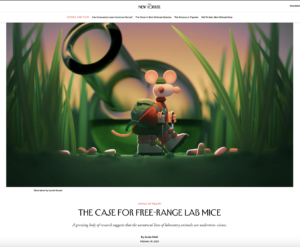
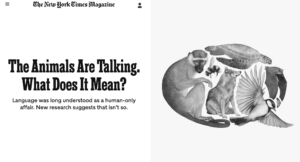
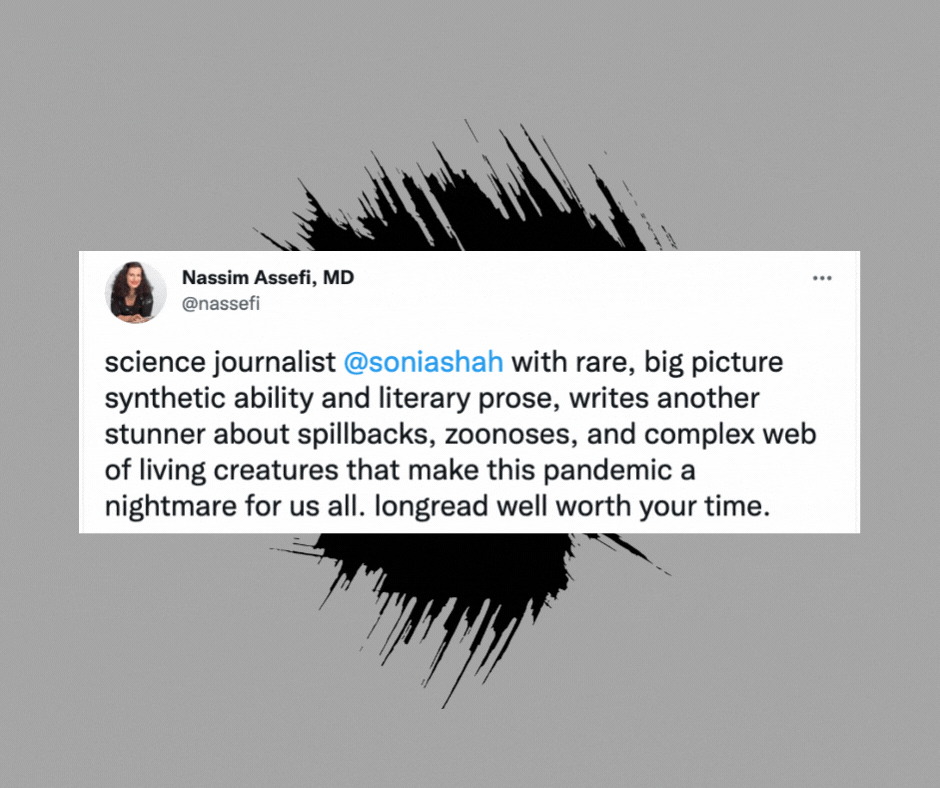
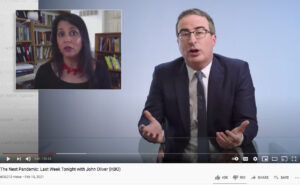
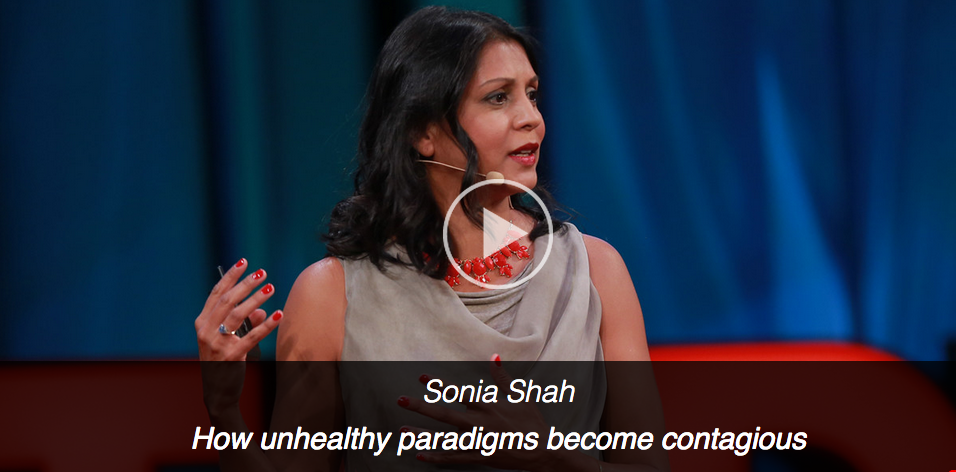





Leave a Reply